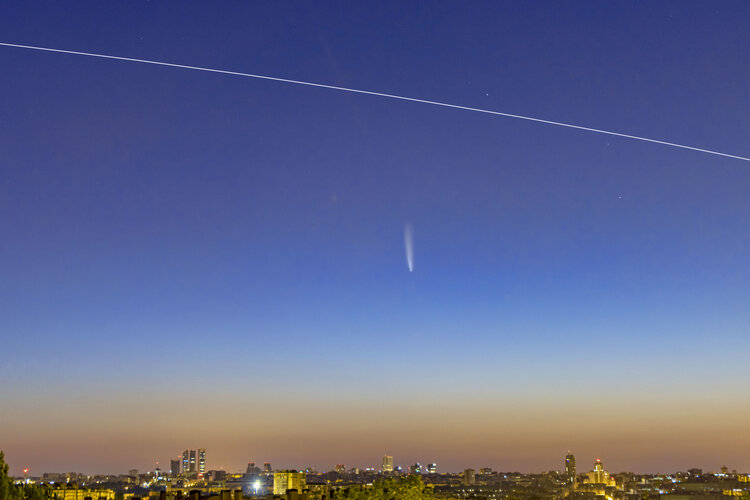
Image:
Skygazers across the Northern Hemisphere are being treated to stunning views of Comet Neowise as it streaks past Earth. Amateur astrophotographer Javier Manteca got a bonus: the International Space Station and comet Neowise are both seen transiting Madrid in this photo captured 11 July.
Taken at dawn, the picture is a composition of 17 stacked images exposed every 2.5 seconds to form the skyline.
Comet C/2020 F3 Neowise is named after NASA’s Near-Earth Object Wide-field Infrared Survey Explorer mission that discovered it in March 2020. The comet completed its perihelion, or closest pass of the Sun, on 3 July and is headed back out of our Solar System, not to return for another 6800 years.
The comet’s flyby of Earth is a rare opportunity to observe and collect data on these cosmic time capsules. Many spacecraft have observed the comet, including the ESA/NASA Solar and Heliospheric Observatory as well as astronauts on board the International Space Station.
ESA’s comet chaser Rosetta trailed comet 67P/Churyumov–Gerasimenko for two years before landing the Philae probe on its surface. The mission amassed a wealth of data that will be studied for years to come.
As Comet Neowise zooms past Earth at a comfortable (and safe) distance of 103 million kilometres, stargazers can catch more views of the comet through July. Consult Earth and Sky or Astronomy Now for times and positions.
Click here for original story, Objects in the night
Source: ESA Space News